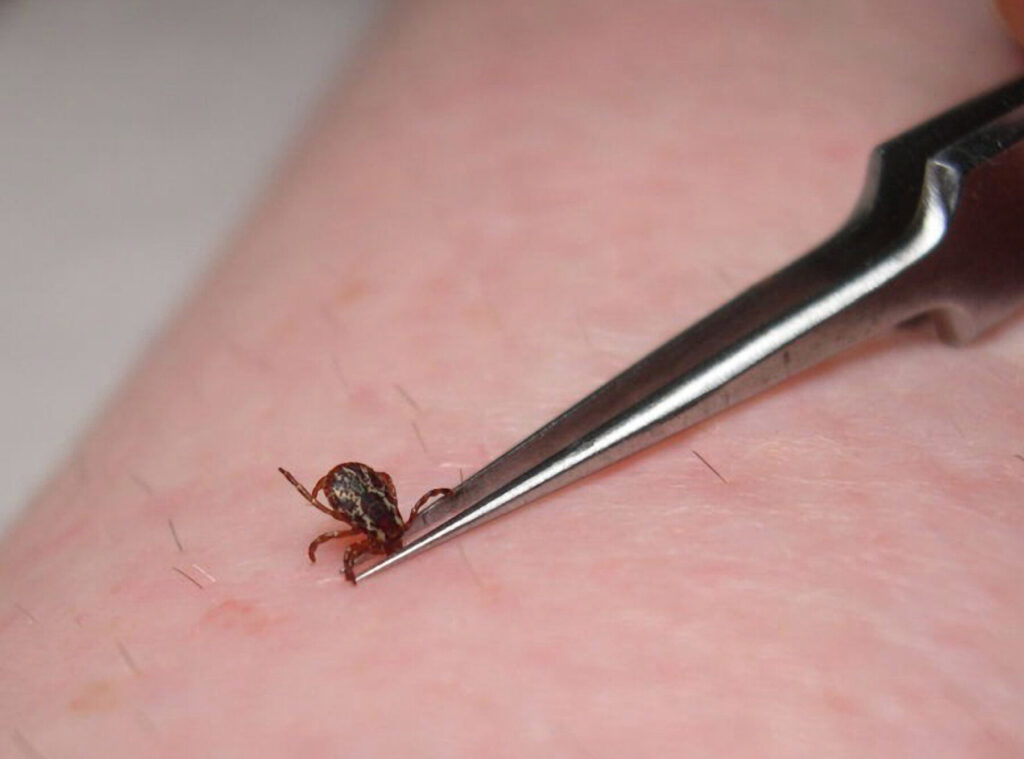Ticks live in a warm climate in an environment that they share with human beings and other creatures such as deer, dogs, mice, cats, and other warm-blooded animals. A tick has four stages in its life cycle: egg, larva, nymph, and adult. Each stage from larva to adult must have a blood meal for the tick to mature into an adult and lay eggs for the next generation. Ticks are found in areas where they can complete each of the life cycles. Ticks are driven to attach themselves and draw blood from their prey.

Ticks are commonly found in grassy areas, including the grass in your own backyard. Ticks of all sizes and weights fall to the ground. To attach to any prey (animal or human) the tick must elevate itself by climbing on taller grassy areas and bushes. Once in position, they wait. Instinct keeps them in place until an appropriate host comes along.
There are several diseases that the ticks can carry including Rocky Mountain Spotted Fever, Anaplasmosis, human ehrlichiosis, and Lyme Disease. Not all ticks carry these diseases; in fact, most do not. One of the most famous yet not very well understood is Lyme disease. Lyme first appeared in the 1970s in a group of children and adults presenting with baffling symptoms in Lyme, Connecticut. These symptoms came on without any warning and would not go away no matter what the treatment. An entomologist, Dr. Willy Burgdorfer, began to study these symptoms and found the connection between the deer tick and what is now called Lyme disease. He discovered that a bacterium called spirochete was the cause of this disease.
I contracted Lyme disease 6 years ago, so I have firsthand experience with this disease and its long-term effects. What are the symptoms of Lyme?
- A red rash called erythema migrans (EM). Most people, but not all, with Lyme disease get this rash. It enlarges over several days and may feel warm. It is usually not painful or itchy.
- Fever.
- Chills.
- Headache.
- Fatigue.
- Muscle and joint aches.
- Swollen lymph nodes (“swollen glands”)
These symptoms can be mistaken for flu. In fact, when my symptoms first appeared I thought it was the flu. The funny thing is, I did this to myself. I went into the tick’s domain unprepared.
You can prevent Lyme and other tick-borne diseases by taking precautions; be aware of your environment. When you find yourself in the tick’s environment make sure to do a tick check at the end of the day. Elmer Grey, UGA entomologist says, “Check yourself for ticks at least twice a day. There is evidence that the longer an infected tick feeds, the greater the chance it has of transmitting a disease to you. Early removal is good prevention.”

The black-legged tick is the primary vector in Georgia. If you find a tick on your body do not destroy it but detach it and place it in a plastic container then the freezer. This is a precaution in case symptoms appear. Wear long sleeved shirts and pants to cover skin areas. Use Permethrin to treat boots, clothing, and camping gear. Use a protective bug spray and stay out of the tick’s domain. Personal protection, early diagnosis, and quick treatment are your best defense against Lyme and other tick-borne diseases.
The author of this article, Robert Cabrera is the Executive Director of Keep Paulding Beautiful and a Paulding UGA Extension Master Gardener, trained to provide education for homeowners on horticulture, sustainable landscaping, and environmentally friendly gardening practices using unbiased, research-based information from the University of Georgia. For more information, contact Paulding County UGA Extension at 770-443-7616 or view our online resources at www.ugaextension.org/paulding. You can learn more by reading the UGA Extension Publication “Protecting Yourself from Ticks.”